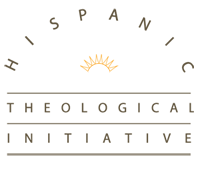Journal for the Hispanic Theological Initiative


Free Back Issues
HTI Articles
- Abstract:
Twenty-one years ago, I walked through the doors of the offices of HTI as an aspiring Ph.D. student and potential awardee of what was then the doctoral fellowship. I did not know then that barely four years before HTI had begun its ambitious plans to chart new paths and create new opportunities for Latinas/os/xs aspiring for further education in religion and theology. Among its objectives was to increase the number of Latinas/os/xs in higher religious and theological education. Since then, HTI has witnessed enormous growth amidst rapidly changing social, cultural, political, and academic landscapes. A long list of Latinas/os/xs would be awardees from different fields of study and disciplines, and today “give back” to the community as scholars, mentors, and resources. This first generation of scholars has become a veritable cloud of witness rallying for the future cohorts of scholars, pastors, and community leaders in multiple contexts prepared with critical skills to navigate the hostile social contexts they confront. From any perspective, the story of HTI is a story of monumental achievements.
Read MoreCollapse / Download IssueWe are cautiously optimistic because many of the concerns and challenges faced by Latina/o/x communities that motivated early pioneers to organize and give birth to organizations such as the Association for Hispanic Theological Education/Associación para la Educación Teológica Hispana (AETH), The Hispanic Summer Program/Programa Hispano de Verano (HSP) and the Hispanic Theological Initiave/Iniciative Teológica Hispana (HTI) have not yet been overcome. The reality of COVID-19 and its disastrous effects on our communities have made us even more aware of the obstacles we face. The acute awareness of our precarious social spaces helps us appreciate even more the work of organizations like the aforementioned, especially HTI, constantly bringing to bear the stories, theological insights, publications, and commitments of those men and women who pioneered this work.
The editorial team of Perspectivas is honored to present this 25th-anniversary issue as yet another installment in the growing record of Latina/o/x concerted work and HTI’s living legacy. The articles in this volume contain what can only be called a partial story. Indeed, through Justo González’s article, we learn of the early beginnings, key actors, and high-level negotiations that the first generation of Latinas/os/xs had to engage to give rise to HTI. Daisy Machado’s piece provides another layer of this story by bearing the intimate relationship between HTI and HSP.
The articles illustrate insights into many of the aspects that make HTI particularly successful: from highlighting the unique en/de conjunto method which distinguishes the activities of HTI (João Chaves and Ted Smith), to incorporating the voices of the people on the ground (Jennifer Owens-Jofré), to drawing from multiple disciplinary fields (Robert Chao Romero), to articulating a grounded theology that engages and relevantly responds to the social issues that impact Latinas/os/xs (María Teresa Dávila). Indeed, HTI has been front and center of these developments in Academia. Through these articles, we also learn that HTI has become a hub of creative scholarly interdisciplinary endeavors, which have impacted and continue to impact the academy through multiple written and social media platforms (Cármen Nanko). But the academy is not the only place where HTI scholars are present. Socorro Castañeda teaches us that it is possible to envision a life and career beyond the academy, and Elizabeth Conde-Frazier shows how HTI scholars have remained with one foot in the academy and the other in pastoral or community leadership, breaking away from traditional ideas that it is impossible to be a hybrid scholar. Above and beyond, through their testimonies, scholars repeatedly remind us that one of HTI’s best-kept secrets is its growing family of scholars, friends, and colleagues who encourage and support each other through networks of connections unrivalled in other academic circles (Gilberto Ruiz and Jacqueline Hidalgo).
Readers will not find in this anniversary issue a complete story. Gaps remain because the story of HTI continues to be unearthed and written. New future developments await HTI. There is renewed energy as a new generation of emerging scholars will bring new perspectives, ideas, and insights that can only elevate HTI to new heights. On this 25-silver anniversary, we are delighted to be part of the story of HTI.
Néstor Medina &
The Editorial TeamResumen:Hace veinticinco años que entré las puertas de la Iniciativa Teológica Hispana (ITH). Yo era un estudiando aspirando al PhD, y también era un candidato para lo que eran entonces las becas para doctorantes. Entonces, no sabía yo que apenas cuatro años antes ITH había comenzado su plan ambicioso de trazar nuevos caminos y de crear nuevas oportunidades para Latinas/os/es aspirando una mayor educación en religión y teología. Entre sus objetivos estaba aumentar el número de Latinas/os/es en educación superior religiosa y teológica. Desde entonces, el HTI ha sido testigo de un enorme crecimiento en medio de un contexto de cambios sociales, culturales, políticos, y académicos acelerados. Una lista larga de Latinas/os/es becados en diferentes campos de estudio y disciplinas hoy “devuelven” a la comunidad, ya como estudiosos y académicos, mentores, y como recursos. La primera generación de académicos se ha convertido en una verdadera nube de testigos animando a las futuras cohortes de académicos, pastores/as, y líderes comunitarios en sus contextos múltiples. Estos preparados/as con habilidades claves para navegar los contextos sociales hostiles que confrontan. Desde cualquier perspectiva, la historia de HTI es una historia de alcances monumentales.
Leer MasLeer Menos / Descargar este ejemplarNosotras/os somos cautelosamente optimistas porque las mismas preocupaciones y retos confrontados por las comunidades Latinas/os/es, que motivaron a los/as pioneros/as a organizarse y dar a luz organizaciones tales como la Asociación para la Educación Teológica Hispana (AETH), Programa Hispano de Verano (PHV), y la Iniciativa Teológica Hispana (ITH) no se han logrado super. La realidad del COVID-19 y sus efectos desastrosos para nuestras comunidades nos ha hecho aún más conscientes de los obstáculos que confrontamos. El conocimiento agudo de la precariedad de nuestros espacios sociales nos ayuda apreciar, aún más, el trabajo de organizaciones como las antes mencionadas, especialmente el ITH, constantemente resaltando las historias, conocimientos teológicos, publicaciones, y compromisos de hombres y mujeres que fueron pioneros/as en este trabajo.
El equipo editorial se honra de presentar este tomo de Perspectivas celebrando el veinticinco aniversario de ITH como otra entrega en el creciente récord del trabajo de Latinas/os/es y del legado vivo de ITH. Los artículos en este tomo contienen lo que se puede llamar una historial parcial. Ciertamente, por medio del artículo de Justo González aprendemos de sus comienzos, actores claves, y las negociaciones de alto nivel en las que la primera generación de Latinas/os/es tuvieron que entrar para levantar a ITH. Daisy Machado provee otra capa de esta historia al exponer la íntima relación entre ITH y el PHV.
Los artículos ilustran ideas de los muchos aspectos que hacen ITH particularmente exitoso: desde resaltar el método original en/de conjunto que distingue a las actividades de ITH (João Chaves y Ted Smith), a incorporar las voces de la gente en las bases (Jennifer Owens-Jofré), impactando múltiples campos disciplinarios (Robert Chao Romero), e incorporando una teología desde las bases que se conecta y responde relevantemente a los asuntos sociales que impactan latinas/os/es (María Teresa Dávila). Ciertamente, ITH ha estado al frente y centro de estos desarrollos en la academia. En estos artículos también aprendemos que ITH se ha convertido en un centro de esfuerzos creativos e interdisciplinarios académicos, que han impactado y continúan impactando la academia por medio de múltiples plataformas escritas y por redes sociales (Cármen Nanko). Pero la academia no es el único lugar donde los/as académicos/as de ITH están presentes. Socorro Castañeda nos enseña que es posible imaginar la vida y una Carrera más allá de círculos académicos, y Elizabeth Conde-Frazier nos muestra como estudiosos/as/es de ITH han permanecido con un pie en la academia y otro en la pastoral o en liderazgo comunitario, rompiendo con ideas tradicionales de que es imposible ser un/a académico/a híbrido/a. Además de todo, por medio de sus testimonios, estudiosos/as/es nos recuerdan que uno de los secretos mejor guardados de ITH es su creciente familia de académicos/as, amigos/as, y colegas, que se animan y apoyan mutuamente por medio de redes de conexión que no tienen comparación en otros círculos académicos (Gilberto Ruiz y Jacqueline Hidalgo).
Nuestras/os lectoras/es no encontrarán en este tomo de aniversario una historia completa. Brechas permaneces porque la historia de ITH continúa siendo desenterrada y escrita. Nuevos desarrollos esperan a ITH en el futuro. Hay una energía renovada a medida que una nueva generación de académicos/as emergentes traerá nuevas perspectivas, ideas, y conocimiento que podrá solamente elevar ITH a nuevos niveles. En este veinticincoavo aniversario de plata, nos deleitamos de ser parte de la historia de ITH
Néstor Medina &
The Editorial Team- Abstract:
DownloadAlmost a year and a half ago, the world embarked on a rollercoaster of social uncertainty and death caused by the then-novel Coronavirus. Since its inception, COVID-19 has been part of the common parlance of the world. Knowing about the rapid spread of the Coronavirus was made possible by the exponential growth of communications technology and a new generation of people whose preferred mode of interaction is through digital devices. Through that same technology, we saw the emergence of the struggles of the Black Lives Matter movement. We found out about the death of several Black and racialized peoples at the hands of the police and immigration authorities. We learned about the profound systemic social, political, and economic inequities that shape our societies, including access to COVID-19 vaccination. And we also got to watch and listen, in real-time, the captivating and challenging poem of Amanda Gorman, as she spoke during the inauguration of newly elected USA President Joe Biden. We found out about multiple changes in the political arena across the world and the unjust war that Israel carries against Palestinians. Our digital devices also allowed us to be virtual eyewitnesses of the unmarked burial site where 215 children were buried on the grounds of the Catholic Indian Residential schools at Kamloops, British Colombia. Meanwhile, human existence is increasingly threatened by the potential of an environmental apocalypse and by the emergence of super viruses resistant to drugs.
Read MoreCollapse / Download IssueThe news about incidents, tragedies, or emerging movements in the world quickly become old news because of the neck-break speed at which we are bombarded with information. At no point in human history have we been aware of the fast-changing pace of reality and of our cultural traditions to the degree we are now. It seems we have become enthralled by the “latest” and the “newest” piece of news and information by staying connected. Yet, this same wealth and accessibility to communications technology also contribute to our reduced ability to concentrate, to pay attention, and to connect at a personal human level. These many questions are undoubtedly the result of the new reality we confront as the world has continued to shrink and as we become painfully aware of our own destructive power in this planet of ours. These multiple issues I mention are not just topics for further discussion and exploration; they are part of the very processes of the undergoing cultural reconfiguration we are experiencing across the globe. These topics are also part of the complex array of interconnected social forces emerging as the world becomes more aware of the legacy of colonization, and the efforts of collective struggles for justice around the globe.
Amidst this jungle of social issues, cultural concerns, and human challenges, religious devotion and spiritualities seem to be gaining ground. But these are no longer dominated by Christianity. A new interreligious ferment is emerging as new digital churches, mosques, and centers of spirituality are popping up everywhere, even while scandals of religious leaders continue to emerge, and entire tragedies can be directly connected to religion and theology. It seems we are finally coming to grips with the fact that theology can be counted as yet another accomplice in the colonizing project. For religious scholars and theologians, it is no longer business as usual. As people wrestle with the many losses of loved ones whose lives have been cut short due to the Coronavirus, questions about the meaning of life are resurfacing. Not surprisingly, liberation theologies and decolonizing attitudes are gaining ground with renewed force in their dis-covering of the multiplicity of issues of which theology must be mindful, besides being aware of the necessity to think about the reality on the ground—where people live life and weave their religious traditions in their everyday life.
On that note, and as part of this mix of emerging issues today, we are happy to offer you the 2021 issue of Perspectivas. Each of the articles helps us amplify our visions and understanding of the Latina/o/x religious experience in response to contemporary issues pertinent to these communities. In the first article, Neomi DeAnda presents a rich interlacing of historical events, mythological accounts, and popular religious customs in the devotion of María de la Leche in two different sites. De Anda retraces some of the historical aspects that contributed to the emergence of such devotions, how they have changed over time, and how they have endured the test of time. Indeed, Latinas/os/xs are not unfamiliar with hope and hopelessness, as the second article by César Baldelomar’s exemplifies. Taking a robust philosophical approach, he engages the field of ethics and the pervasive emphasis of a Christian hope for an otherworldly reality. Baldelomar challenges romantic and utopic notions of hope with what he calls a “realist” stance, claiming the rich tradition of Afro-pessimism and Latina/o/x hopelessness. He draws on these rich traditions to reorient our ethical imagination toward future possibilities. It is precisely that future that Hanna Kang, in the third article, invites us to reconsider even as we revise our past. Much in line with the work of Breny Mendoza by claiming the Arabs as part of the mix of mestizaje in Honduras, and much in the way of Ricardo Feierstein claiming the Jewish presence in Argentina, Kang amplifies our vision of mestizaje yet again by registering the Asian presence both in Latin America and among Latinas/os/xs. She further broadens our vision of this contested term carving out spaces where we can reclaim the Asian presence among us.
In this 2021 issue of Perspectivas, we are particularly honored to also offer the presentations celebrating Peter Mena’s HTI 2020 Book of the year award. We are happy to provide these presentations by Jacqueline Hidalgo, Luis Rivera Pagán, and Kristi Upson-Saia, including Mena’s response to these presentations. Each of these presentations and Mena’s response illustrate the growing edges of Latina/o/x theologies and their versatility in engaging critical theoretical frameworks and ancient texts.
We offer this issue as a resource and invitation to continue our work across academic and non-academic plains.
Néstor Medina, Senior Editor.
Resumen:Hace casi año y medio, el mundo se embarcó en una montaña rusa de incertidumbre y muerte causada por el entonces nuevo Coronavirus. Desde su comienzo, COVID-19 se han hecho parte del vocabulario común en el mundo. Saber acerca de la propagación del Coronavirus fue posible por el crecimiento acelerado de tecnologías de comunicación y de una nueva generación de personas quienes prefieren interactuar por medio de dispositivos digitales. Por la misma tecnología vimos el surgimiento del movimiento Black Lives Matter; supimos de la muerte de personas afrodescendientes y racializadas a manos de la policía y las autoridades de inmigración; aprendimos acerca de las profundas inequidades sociales, políticas, y económicas que forman nuestras sociedades, incluyendo acceso a la vacuna para COVID-19; pudimos ver y escuchar, en vivo, el poema cautivador y desafiante de Amanda Gorman, cuando habló durante la inauguración del electo nuevo presidente de los E.E.U.U. Joe Biden; y supimos acerca de cambios múltiples en la arena política alrededor del mundo y de la guerra injusta que lleva Israel contra palestinos. Nuestros dispositivos digitales también nos permitieron ser testigos virtuales del descubrimiento de una tumba no identificada donde 215 niños/as Indígenas fueron enterrados en los terrenos de las escuelas residenciales católicas indias en Kamloops, British Colombia. Mientras tanto, la existencia humana se ve crecientemente amenazada por el potencial de un apocalipsis ambiental y por el surgimiento de super virus que se resisten a las drogas.
Leer MasLeer Menos / Descargar este ejemplarLas noticias de incidentes, tragedias, y movimientos emergentes en el mundo rápidamente se convierten en noticias viejas por la alta velocidad en la que somos bombardeados con información. En ningún momento en la historia humana hemos estado tan conscientes del ritmo rápidamente cambiante de la realidad y de nuestras tradiciones culturales en la medida de lo que ahora somos. Parece que nos hemos quedado cautivados por las noticias e información “más recientes” y “más nuevas” al mantenernos conectados/as. Sin embargo, esa misma riqueza y accesibilidad a la tecnología contribuye a nuestra reducida habilidad de concentrarnos, a no poner atención, y a no poder conectarnos en los niveles personales humanos. Estas muchas preguntas son sin duda el resultado de la nueva realidad que confrontamos a medida que el mundo sigue encogiéndose, y a medida que nos volvemos dolorosamente conscientes de nuestro poder destructivo en este nuestro planeta. Estos asuntos múltiples que menciono no son solamente temas para mayor discusión y exploración; estos son también parte de los mismos procesos de reconfiguración cultural que estamos experimentando en todo el mundo. Estos temas son también parte del complejo abanico de fuerzas sociales entrelazadas que están surgiendo en la medida que el mundo se hace más consciente del legado de la colonización, y de los esfuerzos colectivos de lucha por justicia en todo el globo terráqueo.
Enmedio de esta jungla de problemas sociales, preocupaciones culturales, y desafíos humanos, la devoción religiosa y la espiritualidad parecen estar ganando terreno. Pero estas ya no más son dominadas por el cristianismo. Un nuevo fermento interreligioso está emergiendo al grado que nuevas iglesias, mezquitas, y centros de espiritualidad digital surgen por todos lados, aun cuando continuamos viendo escándalos de líderes religiosos, y de completas tragedias directamente influenciadas por la religión y la teología. Parece que finalmente estamos preparados para aceptar el hecho que la teología puede ser contada como otra fuerza cómplice en el proyecto colonizador. Para estudiosos/as/xs de la religión y teólogas/os/xs ya no se trata de continuar normalmente. A medida que las personas luchan con la pérdida de seres queridos cuyas vidas fueron truncadas por el coronavirus, resurgen las preguntas del significado de la vida. No es sorprendente que las teologías de la liberación y discursos decoloniales están ganando espacio y cobrando fuerza, des-cubriendo la multiplicidad de asuntos que la teología debe tener en cuenta, además de la necesidad de pensar acerca de la realidad desde las bases—donde las personas viven la vida y tejen sus propias tradiciones religiosas en su cotidianeidad.
En ese sentido y como parte de esa combinación de asuntos emergentes hoy, nos complace ofrecerles la edición 2021 de Perspectivas. Cada uno de los artículos nos ayuda a ampliar nuestra visión y entendimiento de la experiencia religiosa latina/o/x, en respuesta de asuntos contemporáneos pertinentes a estas comunidades. En el primer artículo, Neomi DeAnda presenta un rico entrelazamiento de eventos históricos, recuentos mitológicos, y de costumbres religiosas acerca de la devoción de María de la Leche en dos diferentes sitios religiosos. DeAnda traza algunos de los aspectos históricos que contribuyeron al surgimiento de dichas devociones, cómo éstas han cambiado con el tiempo, y cómo han resistido la prueba del tiempo. Ciertamente, latinas/os/xs están familiarizados con la esperanza y la desesperanza, como lo muestra el segundo artículo por César Baldelomar. Tomando un acercamiento filosófico robusto, el interactúa con el campo de la ética y el énfasis omnipresente de una esperanza cristiana otromundista. Baldelomar desafía nociones de Esperanza románticas y utópicas con lo que él denomina una postura “realista”, reclamando las ricas tradiciones del Afro-pesimismo y la desesperanza latina/o/x. Él toma de estas ricas tradiciones para reorientar nuestra imaginación ética hacia posibilidades futuras. Es precisamente ese futuro el que Hanna Kang, en el tercer artículo, nos invita a reconsiderar mientras revisamos nuestro pasado. Como lo haría Breny Méndoza al clamar los árabes como parte de la mezcla mestiza en Honduras, y mucho en la manera de la que Ricardo Feierstein reclama la presencia judía en Argentina, Kang amplifica la visión del mestizaje una vez más, registrando la presencia asiática tanto en Latinoamérica como entre los/as/xs latinas/os/xs. Además, ella amplía nuestra visión de este término tan discutido para crear espacios donde podamos recobrar la presencia asiática entre nosotros/as/xs.
En esta edición 2021 de Perspectivas, también nos sentimos honrados/as/xs al poder ofrecer las presentaciones celebrando el Premio de HTI al libro del año 2020 otorgado a Peter Mena. Nos sentimos orgullosos de proveer estas presentaciones por Jacqueline Hidalgo, Luis Rivera Pagán, y Kristi Upson-Saia, incluyendo la respuesta a estas presentaciones por Peter Mena. Cada una de estas presentaciones y la respuesta de Mena ilustran algunos de las áreas de crecimiento de las teologías latinas/os/xs y su versatilidad al abordar marcos teóricos críticos y textos antiguos.
Ofrecemos este tomo como fuentes de trabajo e invitación a continuar nuestro trabajo en los espacios académicos y no académicos.
Néstor Medina, Senior Editor.
 Neomi De AndaAbstract:
Neomi De AndaAbstract:This paper traces two images of nursing and lactating Madonnas and their devotions from two geographical locations currently parts of the USA with Spanish Colonial histories to provide a more complicated history.
Read MoreCollapse / Download IssueIn the first, Nuestra Señora de Belén (Our Lady of Bethlehem) in Puerto Rico presents a devotion to the image that has be constantly present on the island since the image first appeared. The second location examines Nuestra Señora de la Leche y Buen Parto (Our Lady of Milk and Happy Delivery) in St. Augustine, Florida. The paper also highlights an overview of times Pope Francis has used this image in his own teaching. Finally, the paper presents themes which may be considered from these images.
Neomi De AndaResumen:Este artículo traza dos imágenes de Marías de la leche y sus devociones desde dos ubicaciones geográficas que actualmente son partes de los EE. UU. con historias coloniales españolas para proporcionar una historia más complicada.
Leer MasLeer Menos / Descargar este ejemplarEn la primera, Nuestra Señora de Belén en Puerto Rico presenta una devoción a la imagen que ha estado constantemente presente en la isla desde que apareció por primera vez. La segunda ubicación examina Nuestra Señora de la Leche y Buen Parto en St. Augustine, Florida. El ensayo también destaca una descripción general de instancias en que el Papa Francisco ha utilizado esta imagen en su propia enseñanza. Finalmente, el artículo presenta temas que pueden considerarse a partir de estas imágenes.
 César “CJ” Baldelomar, LL.M., J.D.Abstract:
César “CJ” Baldelomar, LL.M., J.D.Abstract:This essay argues that to imagine truly different (and transgressive) ethical selves and worlds, hope (as presented in Western secular and religious narratives) should be decentered, in order for ethical characters to face
Read MoreCollapse / Download Issuereality without utopian illusions of the future as touted by humanist and liberal myths of progress and by Christian salvation narratives. How would ethical imagination be different were it to hold hopeful and wishful thinking in tension with a realist and pessimist stance that takes seriously melancholia, the tenets of Afro-pessimism, and the realities of Latinx hopelessness? More importantly, how would ethical imagination shift were it to embrace (rather than simplistically glide over) the specter of nihilism, that is, that the world truly might be meaningless and collectively progressing toward catastrophe at the hands of the world’s most privileged?
César “CJ” Baldelomar, LL.M., J.D.Resumen:Este ensayo argumenta que para imaginar seres y mundos verdaderamente diferentes (y transgresores) la esperanza (como se presenta en las narrativas seculares y religiosas occidentales) deberá ser descentralizada, para que los personajes éticos puedan enfrentar
Leer MasLeer Menos / Descargar este ejemplarla realidad sin ilusiones utópicas del futuro, como lo proponen los mitos humanistas y liberales del progreso y por narrativas cristianas de salvación. Él pregunta ¿cómo sería la imaginación ética diferente si mantuviese el pensamiento esperanzador en tensión con una postura realista y pesimista que toma en serio la melancolía, los principios del afro-pesimismo, y las realidades de desesperanza latina/o/x? Más importante aún, ¿cómo cambiaría la imaginación ética si abrazara (en lugar de deslizarse simplistamente) el espectro del nihilismo, es decir, que el mundo verdaderamente pudiera carecer de sentido y progresar colectivamente hacía la catástrofe a manos de los/as/xs más privilegiadas/os/xs del mundo?
 Hanna KangAbstract:
Hanna KangAbstract:This paper focuses on the identities of the so-called Asian Latinos/as through the analytical lens of mestizaje. Mestizaje is one of the most explored
Read MoreCollapse / Download Issueterrains in Latino/a studies and is also a fundamental analytical lens through which the history and the realities of Latinos/as and Latin Americans come to light. Surprisingly, however, Asian Latinos/as are almost absent from the discourse on mestizaje and even from the general perception when people think about Latinos/as. The intention behind this paper is to create a platform for the voices of Asian Latinos/as as mestizos/as, which have gone unheard for a long time, both within academic discourse and in the minds of Latino/a communities. In doing so, the concept of mestizaje as a universal category that alludes to a harmonious coming together of two or more cultures and that promotes the inclusion of races while radically rejecting racial violence is demystified. Instead, the argument is for a conceptual category of mestizaje that is intentionally messy, ever-changing, and open-ended.
Hanna KangResumen:Este ensaio foca nas identidades dos chamados Asiáticos Latinos/as através do prisma analítico da mestiçagem. Mestiçagem é um dos campos mais explorados
Leer MasLeer Menos / Descargar este ejemplarnos estudos Latinos/as e constitui prisma fundamental pela qual a historia e realidades de Latinos/as vem a tona. Surpreendentemente, no entanto, Asiáticos Latinos/as estão quase sempre ausentes dos discursos sobre mestiçagem e até da percepção geral quando se discute a respeito do que é ser Latinos/as. O propósito deste ensaio é criar uma plataforma para dar voz aos Asiáticos Latinos/as acentuando suas identidades mestiços/as, que ficaram por bastante tempo caladas tanto dentro da academia quanto que nas mentes de comunidades Latino/as. Ao fazer isso, o conceito de mestiçagem, que alude a junção harmoniosa de duas ou mais culturas e que promove a inclusão de raças ao passo que rejeita radicalmente a violência, é desmistificada. Pelo contrário, o argumento apela para uma categoria conceitual de mestiçagem que é intencionalmente suja, constantemente mutável, e aberta para múltiplos significados.
- Abstract:
DownloadResponding to the needs and demands of his era, José Míguez Bonino proved instrumental in thinking with his feet on the ground amid uncertainty, turmoil, and despair. As with other liberation theologians, his theological and ethical work drew on the lived experiences of the faith of the people amidst struggles toward building a better and more just society and world. His theological work speaks to us candidly, especially today, as we grapple with the multiple ways the present COVID-19 global pandemic has affected us all directly. Human relations and cultural dynamics are being reconfigured as we speak. As we come to grips with racialized prejudice targeting members of the Asian communities in relation to COVID-19, we are eerily reminded that the ugly history of blaming ethnic groups for the outbreak of a disease is nothing new. Social distancing (or more accurately, physical distancing) has also brought new levels of suspicion of others as potential carriers of the virus.
Read MoreCollapse / Download IssuePerhaps the novel COVID-19 has come to be the great “equalizer,” whereby people from all over the world and from all walks of life and social spheres are directly affected. What we do know for certain is that the social, political, and economic arrangements that have shaped the present geopolitical structures have clearly revealed the socio-economic disparities that have benefited specific sectors of society at the expense of over-exploited minoritized groups. For example, lack of accessibility to economic resources, proper medication and equipment, medical insurance, and outright access to a hospital bed, are part of a far greater and older scale of global inequality, which has remained hidden behind the façade of advancement and modernization locally and globally. Minoritized communities are particularly bearing the brunt and negative effects of the COVID-19 virus, even while filling the ranks of essential services in the food, farming, cleaning, and many other industries.
Latinas/os/xs are among the hardest hit as only 16 percent of us can carry out their working responsibilities at home. [1] Social distancing (physical distancing) is a luxury, which many in these communities cannot afford. A good number of Latinas/os/xs simply need to continue working or else risk losing their homes or not saving up for their children’s education. While working, they jeopardize their lives in order to supply the needs of the larger society.
Historically, Latinas/os/xs have experienced a conglomeration of challenges to our collective wellbeing. Some of our ancestors experienced times of war and despoliation during the Spanish and Portuguese conquest. Let’s not forget the tens of millions of natives who died because of epidemics, which decimated Indigenous communities in the Americas after 1492.
The slave trade had similar deadly consequences, as Latin America received the largest population of African slaves, many of whom died along the way, were thrown to the oceans, or died of disease or outright exhaustion from working in the mines or in the fields. These slaves saw their lives commodified as chattel, without recourse for a life of freedom. As we recall the experiences of the African descendants in Latin America and among Latinas/os/xs, we affirm that Black Lives Matter. Part of our own role as Latina/o/x scholars is to expose and condemn prevailing anti-African overt and covert attitudes of discrimination in our communities. We must publicly acknowledge that our own communities are directly impacted by and often are rife with racist attitudes. Thus, we reject to be part of any form of racism and discrimination.
Many of our ancestors experienced displacement in the USA-Mexico war (1848) and continue to feel the effects of that war in our own neighborhoods. Still others, with more recent connections with Latin America have seen friends and relatives criminalized or die as they have tried to cross the southern border of the USA or as the women in their families have been victims of femicide. While many in the dominant Anglo culture want to go back to normal, for most Latinas/os/xs, “going back to normal” means the continued perpetuation of the over-exploitation of our communities. We have always lived under exceptional conditions of discrimination and lack of opportunities. Those exceptional conditions have designated most of us, at best, for service at the lowest echelons of society, and at worst, for death. For centuries, our communities have come face-to-face with the tensions that emerge out of living simultaneously in struggle, hopelessness, and refusal to give up. The unbending will of our communities is a testament to our faith and resilience.
It is with that in mind that we publish this collection of articles celebrating the life and theological work of José Míguez Bonino. The papers in this collection were compiled by Néstor Morales Gómez, and we recognize his editorial work in this issue of Perspectivas. Míguez Bonino’s thought has inspired generations of scholars and thinkers in understanding the interconnectedness of the social sciences, political theory, and deep locally grounded theological knowledge. The contributions in this issue of Perspectivas help us celebrate Míguez Bonino’s work, as well as offer important insights as we continue to reflect on what it means to think theologically while remaining locally relevant and contextually located.
The editorial team of Perspectivas is happy to offer this collection of articles as an expression of the rich diversity of liberation ideas, insights, concerns, and questions raised by each of the authors. Each piece helps us see the extent the liberation impetus has travelled and the many allies it has gained and impacted over the years.
The Perspectivas editorial team
Néstor Medina
Socorro Castañeda-Liles
Grace Vargas
Ann Hidalgo
João Chaves
Francisco Javier Peláez Díaz
[1] Catherine E. Shoichet, “Black and Hispanic Workers Are Less Likely to Be Able to Work from Home, a New Report Says,” CNN News, March 19, 2020, https://www.cnn.com/2020/03/19/us/teleworking-black-hispanic-workersa/index.html.
Resumen:En respuesta a las necesidades y demandas de su era, José Míguez Bonino demostró ser esencial al poder pensar con sus pies sobre la tierra en medio de incertidumbre, agitación social, y desesperación. Como con otros teólogos/as de la liberación, sus escritos teológicos y éticos partieron de las experiencias de fe vividas por los pueblos en medio de la lucha por construir una sociedad y mundo mejores y más justos. Su trabajo teológico nos habla con franqueza, especialmente hoy, mientras buscamos entender las formas múltiples con las que la pandemia global del COVID-19 nos afecta a todos/as/es directamente. Las relaciones humanas y las dinámicas culturales están siendo reconfiguradas ahora mismo. Mientras logramos entender prejuicios racializados dirigidos a miembros de las comunidades asiáticas con respecto al COVID-19, nos recordamos con temor de que la fea historia de culpar grupos étnicos por los brotes de alguna enfermedad no es nada nuevo. Distanciamiento social (o, mejor dicho, distanciamiento físico) también ha traído nuevos niveles de sospecha de otras personas como posibles portadoras del virus.
Leer MasLeer Menos / Descargar este ejemplarQuizás el nuevo COVID-19 haya llegado a ser el gran “nivelador” social, donde personas de todas partes del mundo, de todos niveles de vida, y de todas las esferas sociales son afectadas directamente. Lo que sí sabemos por cierto es que los arreglos sociales, políticos, y económicos que han dado forma a las estructuras geopolíticas de hoy revelan claramente las disparidades socioeconómicas que han beneficiado algunos sectores de la sociedad al costo de los grupos minorizados sobreexplotados. Por ejemplo, la falta de accesibilidad a recursos económicos, medicamentos y equipo médico apropiado, seguro médico, y acceso a una cama de hospital, son parte de una escala de desigualdad global mucho mayor y más antigua, que ha permanecido escondida detrás de la fachada de avance y modernización local y globalmente. Las comunidades minorizadas son las que llevan particularmente el peso y son las que soportan los efectos negativos del virus COVID-19, aun cuando llenan las filas de servicios esenciales en las industrias alimenticia, agrícola, de limpieza, y muchas otras.
Latinas/os/xs se encuentran entre los grupos más afectados porque solamente 16 por ciento puede cumplir sus responsabilidades de trabajo desde sus hogares.[1] Distanciamiento social (distanciamiento físico) es un lujo, el cual muchos en estas comunidades no pueden tener. Un buen número de Latinas/os/xs simplemente necesitan continuar trabajando o corren el riesgo de perder sus casas o de no ahorrar suficiente para la educación de sus hijos/as/xs. Mientras trabajan, ellos/as arriesgan sus vidas para satisfacer las necesidades de la sociedad mayor. Históricamente Latinas/os/xs hemos confrontado una aglomeración de retos a nuestro bienestar colectivo. Algunos de nuestros/as antepasados experimentaron tiempos de guerra y despojo durante las conquistas española y portuguesa. No olvidemos las decenas de millones de nativos que murieron debido a la epidemia que diezmó las comunidades Indígenas en las américas después de 1492.
La trata de esclavos tuvo consecuencias fatales similares, porque Latinoamérica recibió la mayor población de esclavos africanos, muchos de los cuales murieron en el camino, fueron tirados a los mares, o murieron de enfermedad o agotamiento total por trabajar en las minas o en el campo. Estos esclavos vieron sus vidas cosificadas como animales sin recurso alguno a una vida de libertad. Mientras nos recordamos de las experiencias de los descendientes de África en Latinoamérica y entre Latinas/os/xs, también afirmamos que Black Lives Matter (las vidas Negras son importantes). Parte de nuestro rol como académicos Latinas/os/xs es exponer y condenar actitudes de discriminación-abiertas y encubiertas—anti-africanas que prevalecen en nuestras comunidades. Debemos de reconocer públicamente que nuestras propias comunidades son impactadas directamente por y que a menudo están plagadas de actitudes racistas. Por lo mismo, nos rehusamos a ser parte de cualquier forma de racismo y discriminación.
Muchos de nuestros antepasados sufrieron desplazamientos durante la guerra entre Los Estados Unidos de América y México (1848), y aún continúan sintiendo los efectos negativos de esa guerra en sus propios barrios. Aun otros, con muchas más conexiones con Latinoamérica han visto amigos/as/xs criminalizados/as/xs, o les han visto morir al intentar cruzar la frontera sur de los E.E.U.U., o ha sufrido cuando las mujeres o sus familias han sido victimizadas por femicidio. Mientras muchos en la cultura dominante Anglo quieren regresar a la normalidad, para la mayoría de Latinas/os/xs “regresar a la normalidad” significa la continuación de la perpetua sobre-explotación de nuestras comunidades. Siempre hemos vivido en condiciones excepcionales de discriminación y falta de oportunidades. Esas condiciones excepcionales han designado a muchos de nosotros para los servicios en los más bajos niveles sociales, y en los peores casos, para la muerte. Por siglos, nuestras comunidades han confrontado las tensiones que surgen como resultado de vivir en la encrucijada entre la lucha, la desesperanza, y el rehusarse a darse por vencidas. La voluntad inquebrantable de nuestras comunidades es un testamento a nuestra fe y resiliencia.
Es con esto en mente que publicamos esta colección de artículos celebrando la vida y trabajo teológico de José Míguez Bonino. Los artículos en esta colección fueron compilados por Néstor Morales Gómez, y reconocemos su trabajo editorial en este volumen de Perspectivas. El pensamiento de Míguez Bonino ha inspirado generaciones de académicos y pensadores a entender la interconexión de las ciencias sociales, teoría política, y el conocimiento teológico con profundas raíces en contextos locales. Las contribuciones en este volumen de Perspectivas nos ayudan a celebrar el trabajo de Míguez Bonino como también ofrecer claves importantes en lo que significa pensar teológicamente mientras permanecemos localmente relevantes y ubicados en nuestros contextos.
Como equipo editorial de Perspectivas nos alegramos de ofrecer esta colección de artículos como una expresión de la rica diversidad de ideas, claves, preocupaciones, y preguntas de carácter liberador que cada uno/a de los/as autores/as incluye. Cada artículo nos ayuda a ver cuán lejos ha viajado el ímpetu liberador y los/as muchos/as/xs aliados/as/xs que ha ganado e impactado en el transcurso de los años.
El equipo editorial de Perspectivas
Néstor Medina
Socorro Castañeda-Liles
Grace Vargas
Ann Hidalgo
João Chaves
Francisco Javier Peláez Díaz
[1] Catherine E. Shoichet, “Black and Hispanic Workers Are Less Likely to Be Able to Work from Home, a New Report Says,” CNN News, March 19, 2020, https://www.cnn.com/2020/03/19/us/teleworking-black-hispanic-workers/index.html.

 Nancy E. BedfordAbstract:
Nancy E. BedfordAbstract:In this essay, I would like to reflect on some of the dimensions of the theology of José Míguez Bonino that has left crucial marks on my own hermeneutics, and that I consider form part of his own theological legacy.
Read MoreCollapse / Download IssueI refer specifically to some of the concepts distilled in two of his better-known books, La fe en busca de eficacia (1977) (Faith in Search of Efficacy) y Rostros del protestantismo latinoamericano (1995) (Faces of Latin American Protestantism), but which are also reflected simply in his way of being and facing the world as a Latin American Methodist theologian. Those contributions helped me delve into such central issues as the Latin American reading of theological sources, justification by faith, and the trinitarian character of theology.
Nancy E. BedfordResumen:En este ensayo quisiera reflexionar sobre algunas dimensiones de la teología de José Míguez Bonino que han marcado surcos en mi propia hermenéutica y que considero forman parte importante de su legado teológico.
Leer MasLeer Menos / Descargar este ejemplarMe refiero sobre todo a algunos conceptos vertidos en dos de sus libros más conocidos, La fe en busca de eficacia (1977) y Rostros del protestantismo latinoamericano (1995), pero reflejados también simplemente en su manera de ser y de pararse frente al mundo como teólogo metodista latinoamericano. Esas contribuciones me ayudaron a adentrarme en temas tan centrales como la lectura latinoamericana de las fuentes teológicas, la justificación por la fe y el carácter trinitario de la teología.
 Rev. Néstor Gómez and E. Alexander V. Morea-van BerkumAbstract:
Rev. Néstor Gómez and E. Alexander V. Morea-van BerkumAbstract:José Míguez Bonino was a contextual theologian and problematizer, if we wanted to call him that. Hence, our intention in this short article is to present some preliminary notes and observations about the ethical thought of Míguez Bonino, especially in the work he published just after
Read MoreCollapse / Download Issuehis participation in the Second Vatican Council: Love and Do What You Want (1972). We do this to provoke a debate about the specificity of Evangelical morality over the analytical emphases that it makes possible, either around the Christian subject or Christian moral acts.
Rev. Néstor Gómez and E. Alexander V. Morea-van BerkumResumen:José Míguez Bonino era un teólogo contextual y problematizador, si así lo quisiéramos denominar. De ahí que nuestra intención en este escrito es presentar algunos apuntes u observaciones preliminares acerca del pensamiento ético de Míguez Bonino, especialmente en la obra que publicó justo después de su participación
Leer MasLeer Menos / Descargar este ejemplaren el Concilio Vaticano II: Ama y haz lo que quieras (1972). Esto con el fin de suscitar un debate en torno a la especificidad de la moral evangélica sobre los énfasis analíticos que posibilita: bien sea en torno al sujeto cristiano o a los actos morales cristianos.
 Nicolás PanottoAbstract:
Nicolás PanottoAbstract:This article intends to investigate the political dimension of José Míguez Bonino’s theology. As one of the Protestant referents of Latin American liberation Theology, the work of Bonino represents a deepening of this theological paradigm,
Read MoreCollapse / Download Issuebut from a singular anchor, which critically resignifies several of its epistemic and methodological assumptions. We will analyze this singular view from what we call Bonino’s “theology of the public”, taking as point of departure its thematic development in the field of politics as well as the identification of a critical theological epistemology that expands the political dimension of the method in Latin American theologies.
Nicolás PanottoResumen:Este trabajo pretende indagar sobre la dimensión política de la teología de José Míguez Bonino. Como uno de los referentes protestantes de la teología de la liberación en América Latina, el trabajo de Bonino representa una profundización de este paradigma teológico,
Leer MasLeer Menos / Descargar este ejemplarpero desde un anclaje singular, que resignifica críticamente varios de sus presupuestos epistémicos y metodológicos. Analizaremos dicha singularidad desde lo que denominamos como una “teología de lo público” de Bonino, a partir de su desarrollo sobre diversas temáticas dentro del campo político y la identificación de una epistemología teológica crítica que amplía la dimensión política del método en las teologías latinoamericanas.
 Aaron ConleyAbstract:
Aaron ConleyAbstract:This essay represents an outworking of my conversion to praxis. It demonstrates some of the ways Míguez Bonino’s thoughts in Toward a Christian Political Ethic have shaped the work I now engage in. The primary focus of this reflection is not about political ethics, but about the historical analysis Míguez Bonino relies upon to make a Christian political ethic possible.
Read MoreCollapse / Download IssueMoving from an exclusively individualistic gospel characteristic of others from my social location to a gospel that engages unjust structures of oppression is a move requiring an alternative way of understanding ourselves historically.
Aaron ConleyResumen:Este ensayo representa un resultado de mi conversión a la praxis. Demuestra algunas de las maneras de las que el pensamiento de Míguez Bonino esbozados en Toward a Christian Political Ethics ha formado mi trabajo actual. El focus primario de esta reflexión no es acerca de ética política sino acerca del analísis histórico en el que se basa Míguez Bonino para hacer una ética plítical cristiana.
Leer MasLeer Menos / Descargar este ejemplarPasando de un evangelio exclusivamente individualista característico de otras personas en mi contexto social a un evangelio que envuelve estructuras injustas de opresión, es un giro que requiere maneras alternativas de entendernos históricamente.
 Julie ToddAbstract:
Julie ToddAbstract:Míguez Bonino emphasized that the theologian is in a “double location”; first, within a theological discipline with its particular epistemological conditions and demands, and secondly as a social agent within a particular social formation. I am honored to write this reflection on José Míguez Bonino and his impact on my teaching and scholarship.
Read MoreCollapse / Download IssueHow did this white, middle-class, feminist, progressive, U.S. Christian come to value the work of this Argentine liberation theologian so much? Engaging José Míguez Bonino’s works continually revealed the deep and pervasive influence of my social location on my theological and political ideas and practices.
Julie ToddResumen:Míguez Bonino enfatizó que teologós/as se encuentran en una “doble ubicación”; primero dentro de una disciplina teológica con sus condiciones y demandas epistemológicas particulares, y segundo, como agente social dentro de una formación social específica. Estoy honrada de escribir esta reflexión sobre José Míguez Bonino y su impacto en my enseñanza y trabajo académico.
Leer MasLeer Menos / Descargar este ejemplar¿Cómo esta cristiana blanca, de clase media, feminista, progresista, de los Estados Unidos de America llegó a valorar tanto el trabajo de este teólogo de la liberación argentino? Abordar los trabajos de José Míguez Bonino reveló continuamente la profunda y dominante influencia de mi ubicación social en mis ideas y prácticas teológicas y políticas.
 Carlos BeltránAbstract:
Carlos BeltránAbstract:I want to reflect on “unity” within the concept of “ecumenism”. This theme was a great passion for the Argentine thinker José Míguez Bonino throughout his life. His work, in general, contains several deep insights that I would like to recover in this edition that celebrates his life. The theme of the unity of humanity is a general horizon for the more particular theme of ecumenism within Christian thought.
Read MoreCollapse / Download IssueThe idea of unity evolves along the way, starting with a statement of the need for Christians to be united, until it reaches the need to consider humanity as a whole within the concept of “unity”. The evolution of this idea posed several questions regarding themes such as the mission of the churches, the challenges of religious diversity for unity, Christian identity, the dialogue between religions and so on. The theme of identity is particularly crucial and relevant, as is the theme of religious pluralism.
Carlos BeltránResumen:Quiero hacer una reflexión sobre la “unidad” dentro del concepto de ecuménico. Este fue una gran pasión para el pensador argentino José Míguez Bonino a lo largo de su vida. Su obra en forma general contiene varias ideas profundas que me gustaría recuperar en esta edición conmemorativa de su vida. El tema de unidad de la humanidad es un horizonte general para el tema particular del ecumenismo dentro del pensamiento cristiano.
Leer MasLeer Menos / Descargar este ejemplarLa idea de la unidad evoluciona en el camino, comenzando con una enunciación de la necesidad de que los cristinos estén unidos, hasta que llega a darse cuenta de la necesidad de considerar a la humanidad como un todo dentro del concepto de “unidad”. Esta evolución de la idea fue colocando varias interrogantes con respecto a temas como la misión de las iglesias, los desafíos de diversidad religiosa para una unidad, la identidad cristiana y el diálogo entre las religiones, etc. El tema de identidad es particularmente de una importancia y actualidad crucial, como lo es el pluralismo religioso.
 Lloyd Barba, PhD and Tatyana Castillo-RamosAbstract:
Lloyd Barba, PhD and Tatyana Castillo-RamosAbstract:From the origins of the U.S. Sanctuary Movement in the 1980s to the declaration of the New Sanctuary Movement (NSM) in 2007 and the new wave of NSM activism starting in 2016, sanctuary seekers, workers, and leaders have enacted various kinds of sacred resistance to respond to the shifting contexts of immigration crises.
Read MoreCollapse / Download IssueThis article offers a conceptual framework to unpack the history and polyvalent meaning of the term “sanctuary” today. We argue that since Trump’s election, we are experiencing a second wave of the New Sanctuary Movement.
Lloyd Barba, PhD and Tatyana Castillo-RamosResumen:Desde los orígenes del Movimiento Santuario en Los Estados Unidos de América en la década de los 1980s a la declaración del Nuevo Movimiento Santuario (NMS) en 2007 y la nueva ola de activismo del NMS en 2016, buscadores, trabajadores, y líderes de santuario han adoptado varias clases de resistencia para responder a los contextos cambiantes de las crisis migratorias.
Leer MasLeer Menos / Descargar este ejemplarEste artículo ofrece un marco conceptual para desempacar la historia y el significado del término “santuario” hoy. Argumentamos que, desde la elección de Donald Trump, se está experimentando una segunda ola del Nuevo Movimiento Santuario.
 Rodolfo Estrada IIIAbstract:
Rodolfo Estrada IIIAbstract:This article explores the relationship between social–political activism for Dreamers and the Johannine Spirit–Paraclete. It seeks to answer the question: what does the Paraclete have to do with Dreamers? The article proposes that we reconsider Johannine pneumatology for social–political activism by reimagining the Paraclete’s forensic identity and activity.
Read MoreCollapse / Download IssueIn particular, I explore how the Farewell Discourse of the Fourth Gospel describes the Paraclete within a literary context of child abandonment and need for advocacy. In addition, the metaphor for “orphan” in antiquity illuminates further aspects of the Paraclete’s role as an advocate for the defenseless. The Paraclete’s activity is not only applicable to the disciples, but also to Dreamers who are legislatively orphaned and abandoned by their own “fatherland” today. Finally, I explore how the Paraclete paradigm is reflected in the life of Sayra Lozano, a Pentecostal Latina advocate and Dreamer.
Rodolfo Estrada IIIResumen:Este artículo explora la relación entre activismo social-político para los Soñadores y el paracleto-Espíritu joánico. Este mismo busca la respuesta a la siguiente pregunta: ¿Qué tiene que ver el Paracleto con los Soñadores? Se propone que debemos reconsiderar la neumatología joánica para el activismo social-político reimaginando la actividad forense del paracleto.
Leer MasLeer Menos / Descargar este ejemplarEn particular, exploro como el discurso de despedida de Jesús en el cuarto evangelio describe el paracleto dentro de un contexto literario de abandono de niños/as y la necesidad de defenderlos/as. Además, se usa la metáfora del “huerfano/a” en la antigüedad para iluminar otros aspectos del papel del paracleto como defensor de los/as indefensos/as. La actividad del paracleto no es solamente aplicable a los discípulos, sino también a los Soñadores quienes son legislativamente huérfanos y abandonados por su “tierra natal” hoy. Finalmente, exploro como el paradigma del Paracleto se refleja en la vida de Sayra Lozano, una Latina Pentecostal que aboga por los/as Soñadores/as.

